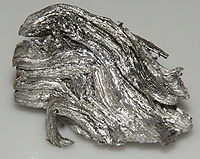
A Nomogram for Predicting Unplanned Intraoperative Hypothermia in Patients With Colorectal Cancer Undergoing Laparoscopic Colorectal Procedures.
Sign Up to like & getrecommendations! Published in 2022 at "AORN journal"
DOI: 10.1002/aorn.13845
Abstract: Unplanned intraoperative hypothermia is a complication that can lead to a variety of negative outcomes, such as cardiovascular events. We aimed to develop and validate an intraoperative hypothermia risk prediction nomogram for patients with colorectal… read more here.
Keywords: colorectal procedures; unplanned intraoperative; laparoscopic colorectal; undergoing laparoscopic ... See more keywords

Development and internal validation of an algorithm to predict intraoperative risk of inadvertent hypothermia based on preoperative data
Sign Up to like & getrecommendations! Published in 2021 at "Scientific Reports"
DOI: 10.1038/s41598-021-01743-z
Abstract: Intraoperative hypothermia increases perioperative morbidity and identifying patients at risk preoperatively is challenging. The aim of this study was to develop and internally validate prediction models for intraoperative hypothermia occurring despite active warming and to… read more here.
Keywords: preoperative data; risk; hypothermia; algorithm predict ... See more keywords

Impact of Intraoperative Hypothermia on Incidence of Infection in Implant-Based Breast Reconstruction.
Sign Up to like & getrecommendations! Published in 2023 at "Plastic and reconstructive surgery"
DOI: 10.1097/prs.0000000000010574
Abstract: BACKGROUND Infection following implant-based breast reconstruction can lead to devastating complications. Risk factors for infection include smoking, diabetes, and obesity. Intraoperative hypothermia may represent another modifiable risk factor. This study analyzed the effect of hypothermia… read more here.
Keywords: infection; implant based; reconstruction; hypothermia ... See more keywords

Impact of Intraoperative Hypothermia on Autologous Breast Reconstruction.
Sign Up to like & getrecommendations! Published in 2023 at "Annals of plastic surgery"
DOI: 10.1097/sap.0000000000003458
Abstract: OBJECTIVE Studies have identified perioperative hypothermia as a risk factor for impaired wound healing, increased hospital length of stay, and surgical site infection. This study examines the effect of intraoperative hypothermia on postoperative outcomes in… read more here.
Keywords: wound healing; breast reconstruction; reconstruction; hypothermia ... See more keywords

Thermal suit connected to a forced‐air warming unit for preventing intraoperative hypothermia: A randomised controlled trial
Sign Up to like & getrecommendations! Published in 2020 at "Acta Anaesthesiologica Scandinavica"
DOI: 10.1111/aas.13714
Abstract: Inadvertent intraoperative hypothermia is a common occurrence in surgical patients. A thermal suit is an option for passive insulation. However, active warming is known to be more effective. Therefore, we hypothesised that a forced‐air warming… read more here.
Keywords: forced air; intraoperative hypothermia; air warming; thermal suit ... See more keywords

Impact of the Hormonal Status in Women on Intraoperative Hypothermia during Laparoscopic Gynecologic Surgery when Considering the Fresh Gas Flow Rate: A Retrospective Study
Sign Up to like & getrecommendations! Published in 2022 at "BioMed Research International"
DOI: 10.1155/2022/5305165
Abstract: Previous studies reported the impact of intrinsic and extrinsic factors on intraoperative hypothermia. However, no clinical study to date has considered the effects of both the phase of the menstrual cycle (an intrinsic factor) and… read more here.
Keywords: hormonal status; phase; hypothermia; study ... See more keywords

Risk Factors for Intraoperative Hypothermia during Holmium Laser Enucleation of the Prostate.
Sign Up to like & getrecommendations! Published in 2023 at "Urologia internationalis"
DOI: 10.1159/000528721
Abstract: INTRODUCTION Holmium laser enucleation of the prostate (HoLEP) is considered a size-independent gold standard for benign prostatic hyperplasia (BPH), and there is no upper limit of prostate weight that can be treated. Tissue retrieval can… read more here.
Keywords: holmium laser; enucleation prostate; laser enucleation; hypothermia ... See more keywords

Intraoperative Hypothermia Is Not Associated with Surgical Site Infections after Total Hip or Knee Arthroplasty.
Sign Up to like & getrecommendations! Published in 2022 at "Acta medica Okayama"
DOI: 10.18926/amo/64115
Abstract: Maintaining perioperative normothermia decreases the post-surgery surgical site infection (SSI) rate. We investigated whether SSI is associated with intraoperative hypothermia in total hip (THA) and total knee (TKA) arthroplasties by retrospectively analyzing 297 THA and… read more here.
Keywords: hypothermia associated; total hip; hypothermia; surgical site ... See more keywords

Risk factors and outcomes of intraoperative hypothermia in neonatal and infant patients undergoing general anesthesia and surgery
Sign Up to like & getrecommendations! Published in 2023 at "Frontiers in Pediatrics"
DOI: 10.3389/fped.2023.1113627
Abstract: Objective The incidence of intraoperative hypothermia remains high in pediatric patients during anesthesia and surgery even though core body temperature monitoring and warming systems have been greatly improved in recent years. We analyzed the risk… read more here.
Keywords: general anesthesia; risk factors; hypothermia; anesthesia surgery ... See more keywords

The Effects of Intraoperative Hypothermia on Postoperative Cognitive Function in the Rat Hippocampus and Its Possible Mechanisms
Sign Up to like & getrecommendations! Published in 2022 at "Brain Sciences"
DOI: 10.3390/brainsci12010096
Abstract: Intraoperative hypothermia is a common complication during operations and is associated with several adverse events. Postoperative cognitive dysfunction (POCD) and its adverse consequences have drawn increasing attention in recent years. There are currently no relevant… read more here.
Keywords: hypothermia postoperative; effects intraoperative; pocd; postoperative cognitive ... See more keywords

Correlation between the Perfusion Index and Intraoperative Hypothermia: A Prospective Observational Pilot Study
Sign Up to like & getrecommendations! Published in 2021 at "Medicina"
DOI: 10.3390/medicina57040364
Abstract: Background and Objectives: We examined the association between the baseline perfusion index (PI) and changes in intraoperative body temperature during general anesthesia. The PI reflects the peripheral perfusion state. The PI may be associated with… read more here.
Keywords: hypothermia; perfusion; intraoperative hypothermia; body temperature ... See more keywords